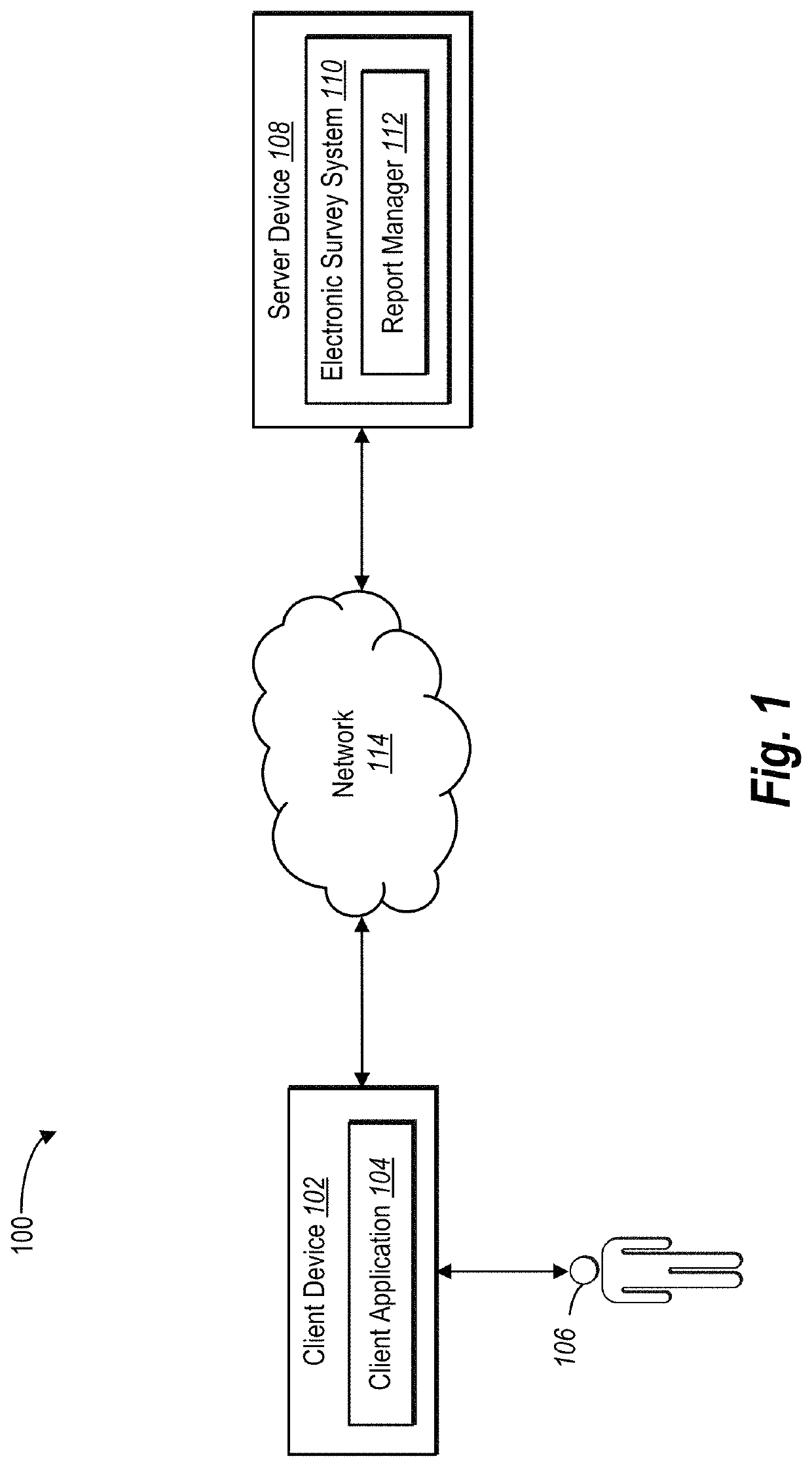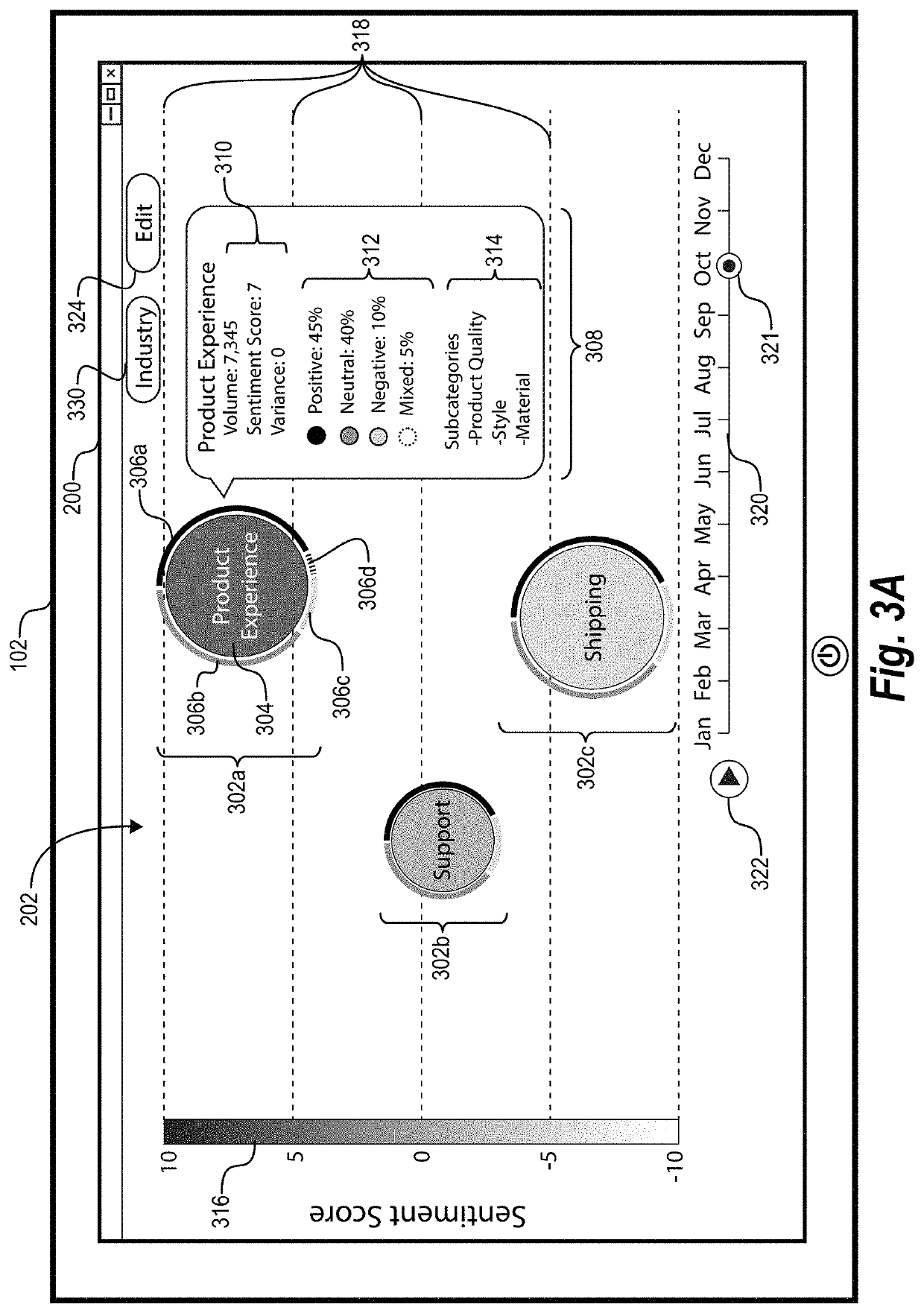Providing efficient graphical user interfaces for visualizing large datasets
a graphical user interface and dataset technology, applied in visual data mining, instruments, marketing, etc., can solve the problems of inefficient reporting, inaccurate conclusions and incorrect decisions, and conventional systems that fail to fully realize the insights that can be gained from large datasets, so as to reduce the number of user interactions
- Summary
- Abstract
- Description
- Claims
- Application Information
AI Technical Summary
Benefits of technology
Problems solved by technology
Method used
Image
Examples
Embodiment Construction
[0020]One or more embodiments disclosed herein provide a report management system for generating visualizations for large amounts of data within a graphical user interface. Various embodiments of the report management system generate and provide a multidata display element to visualize large datasets so the system can provide a display of many types of data simultaneously, on a single interface, and within a single display element. Additionally, embodiments of the report management system dynamically visualize large datasets by animating data changes within a multidata display element over time so that a user can easily recognize trends, dependencies, and / or other aspects of the various types of data within the large dataset. Further, in one or more embodiments the report management system generates hierarchies of visualizations to efficiently present views of various sub-categories of data that contribute to a larger set of data. For example, upon detecting a user interaction with ...
PUM
 Login to View More
Login to View More Abstract
Description
Claims
Application Information
 Login to View More
Login to View More - R&D
- Intellectual Property
- Life Sciences
- Materials
- Tech Scout
- Unparalleled Data Quality
- Higher Quality Content
- 60% Fewer Hallucinations
Browse by: Latest US Patents, China's latest patents, Technical Efficacy Thesaurus, Application Domain, Technology Topic, Popular Technical Reports.
© 2025 PatSnap. All rights reserved.Legal|Privacy policy|Modern Slavery Act Transparency Statement|Sitemap|About US| Contact US: help@patsnap.com



